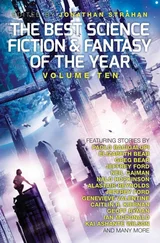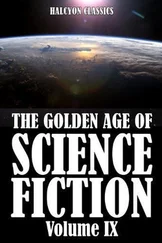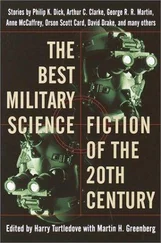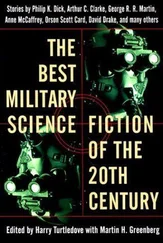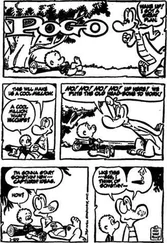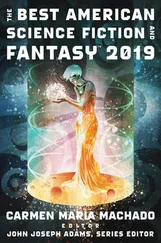Either way, it’s definitely a miracle. Most unexpected. We’ll leave it up to you.
On another day, she rolls over and looks at him.
“What?” he says.
“It doesn’t have to be this hard, right?” she says. “We don’t have to live like this.”
He doesn’t respond right away. He takes so long, she thinks he is considering the enormity of her question, that perhaps it has left him winded. She thinks maybe this is the moment he will realize how pointless it is, how hard she’s trying, how much time he’s wasted, how defeated they both are. Maybe he will say, Huh, why didn’t I ever think of that.
But he doesn’t answer, no surprise. He doesn’t have anything to say. Maybe it’s too obvious for words. Maybe he doesn’t think she deserves a response. When he looks at her, she has the sense of a man who is making up his mind one way or another. A man who stares at a dead end and sees his opportunity.
Maybe you will want to look away for this part.
She will be taken to a laboratory, which, in the style of laboratories of the time and perhaps every laboratory in every time, feels a bit like the underbelly of a dungeon. Here she will be injected with a poison that liquefies her insides in a matter of hours. One of her captors will spill the poison on himself and this will derail the proceedings. They will perform an autopsy to confirm that she is dead. With a delicacy that is surgical, or at least very thorough, they will crack every bone in her body. They will take out her internal organs, still gooey and falling apart, and feed them to any nearby dogs, who may need a fair amount of persuading. She will wake several times, but never for long. There will be quite a lot of screaming, most likely, but you don’t want to hear about that.
They will set her corpse on fire, and put the scorched bone fragments and teeth and shreds of flesh into a box. They will ship the box somewhere very far away, perhaps the remote island from earlier on. They will wrap the box in weights and cast it into the ocean. They will train a shark to develop a palate for mysterious boxes wrapped in weights so it can devour her remains. They will send a nuke from outer space to the precise coordinates of the shark. The bomb will vaporize the island, too, and everyone who lives there, a few thousand tidy deaths, but it’s probably worth it.
They dispatch a courier to Henry immediately. The courier tells him, “She’s dead,” and Henry sags against the wall in relief. He spends the day in devout prayer. He waits a week or two for the obvious to happen. But no, she doesn’t return.
He asks for extravagant bouquets to be delivered to her apartments, a mixtape of her favorites: English roses, bloody chrysanthemums, black tulips. He summons an architect to begin the blueprints for her memorial. He spends a whole day telephoning her parents and loved ones to break the news, with each call recalibrating his gravity, sorrow, and air of quiet suffering, depending on how much they care.
He will come to his bedroom later that night, a little weary, and there she will be, just like that. No explanation. She will be curled up in his favorite armchair like the slyest of cats, fast asleep, looking content. Fully intact, organs back in her body, insides unliquefied, most definitely not in a box, or a shark, or an ocean, or heaven, or hell.
Do you want to know how she did it?
Here’s how she did it: her ancestors were microorganisms, and a few years later here she is. The secret is this: her great-grandparents were monkeys and now she can do long division. The only trick is to know better. Didn’t anyone teach you to know better?
Here’s how she did it: she was always rooting for the cockroach. No one mourns the cockroaches, the dust mites, the bacteria, the weeds, the worms. The chickens that endure their own beheadings. But she remembers. She remembers the things that survive and those that don’t, and there are so many that don’t, so very many.
Here’s how she did it: she knows there’s no difference between the entrance and the exit. It’s not so difficult to turn around and walk right back in. Is it?
Here’s how she did it: no one wants to see her die. Did you know it’s that easy, to stay alive?
When you die, you should tell all the dead girls.
KARIN LOWACHEE
Survival Guide
FROM Burn the Ashes
Fourteen
The neurolink never lets him forget. It’s Aiden the way Sage remembers him, the sound of his voice more potent than any visual. Sometimes when he disconnects the link, he still hears Aiden in the chamber of his mind. It’s a grief he constantly steps on, the cracks in the pavement that bring nothing but bad luck.
At first he fought the neurolink. He didn’t want the reminder—it was macabre, how could they make him? But without it he would fall behind, his education would suffer, the world would end. His parents let him grieve for a month but then they made him use the link. Aiden’s mother created it, after all: AIDEN, the Artificial Integrated Dialogue and Education Neurolink. Created it for them, the students. For a better world, better opportunities, a better future. So they don’t have to be driven solely by a numerical system of evaluation and other people’s agendas. That’s the idea anyway, Ms. Ito said. Of course they still sit exams, submit evaluations to higher learning institutions, but the focus has shifted, become more holistic. It’s radical insofar as it’s breaking out of the nineteenth-century model of factory schooling, but Ms. Ito said education needed something radical.
Let’s learn together! the neurolink says in Aiden’s voice.
The other kids still stare at him in the hallways. That’s Sage Kuo, they say, he was Aiden’s best friend. He was the one riding his bike with Aiden. He was the one that saw the car hit. He was the one that survived. The past-tense gossip of it, the kid he grew up with relegated to a past-tense existence. It’s cliché to say but he thinks it anyway: he lost his childhood when he lost Aiden. Lost like a memory or keys or baggage. No return address.
He visits Aiden’s mother every month. She doesn’t remember him. After her son’s death she went inside the link and never really came out. Who can blame her? It’s her son’s voice, it’s Aiden’s mannerisms adapted to whoever interacts with him. Students like Sage. AIDEN is Aiden and he knows everything, he’s the world, he’s all of Sage’s questions answered except the one that nobody can answer. Sage hears him in his mind even without the neurolink. But he hears Aiden most when he’s inside the link. Almost like Aiden’s still alive, as if all he has to do is set the interface dots to his temples and they’re together again, ready to dive into their next adventure.
He’s tempted to fall in just like Ms. Ito. Become lost.
Ms. Ito sits with a red blanket across her lap gazing out of the wide window of her room. Outside the cherry blossom tree that inspired the name of her company—Sakura Labs—is in full bloom. It is that specific time of year when they come alive and almost immediately begin to die. Within two weeks the pale petals create a carpet beneath the trees. It’s a brief life for the blossoms, and he sees her thinking it in some way, in the fog of her eyes with the dots blinking blue at her temples.
A year ago, when it was all too fresh, he used to tell her he was sorry. He could see she blamed him, not because he was responsible for Aiden’s death, but because he survived. His parents told him it was a part of her grief. It isn’t neat, it isn’t forgiving, it has nothing to do with him, and Sage understands it. So he still visits her because he thinks Aiden would want him to, the real Aiden.
Читать дальше


